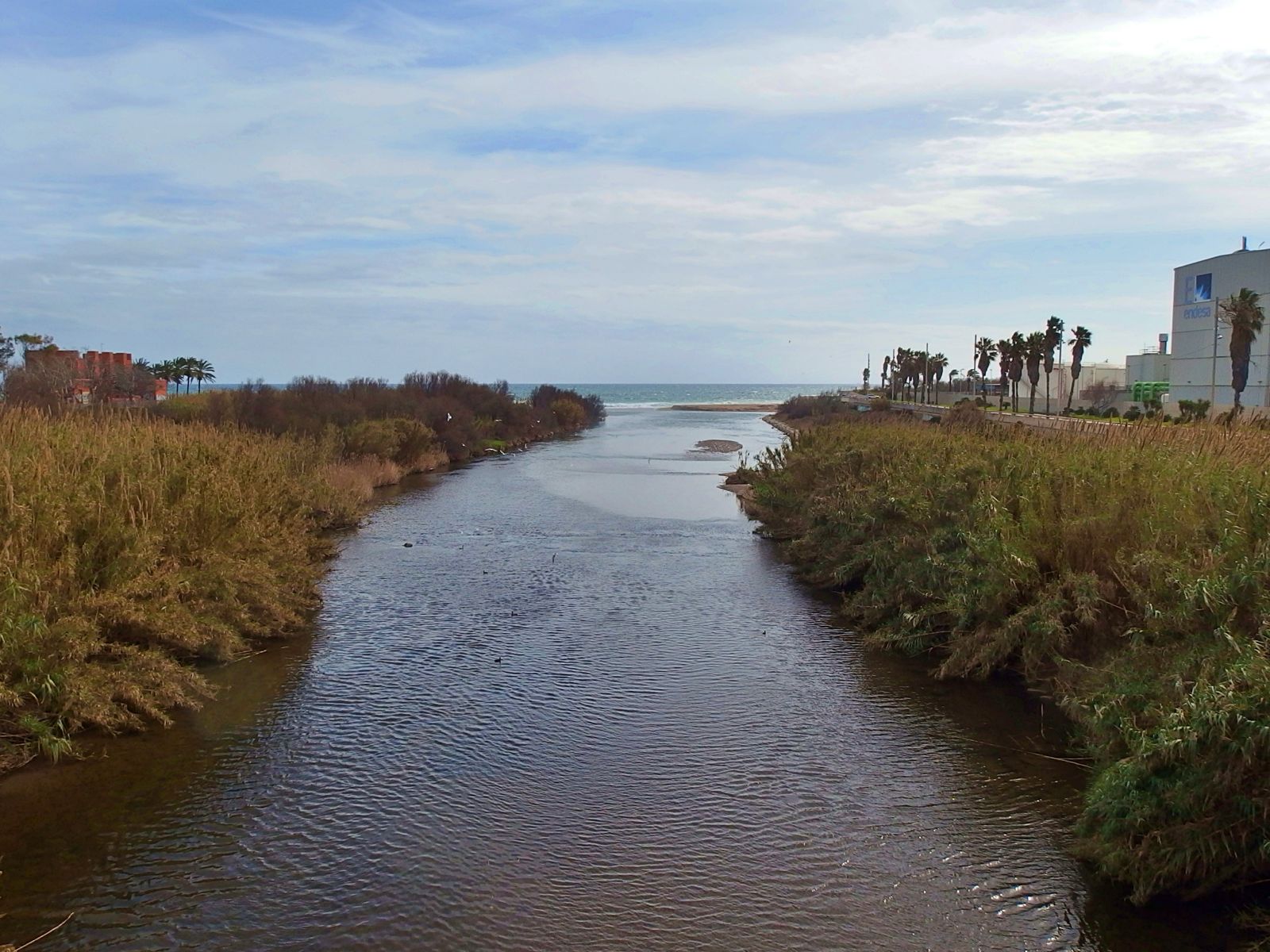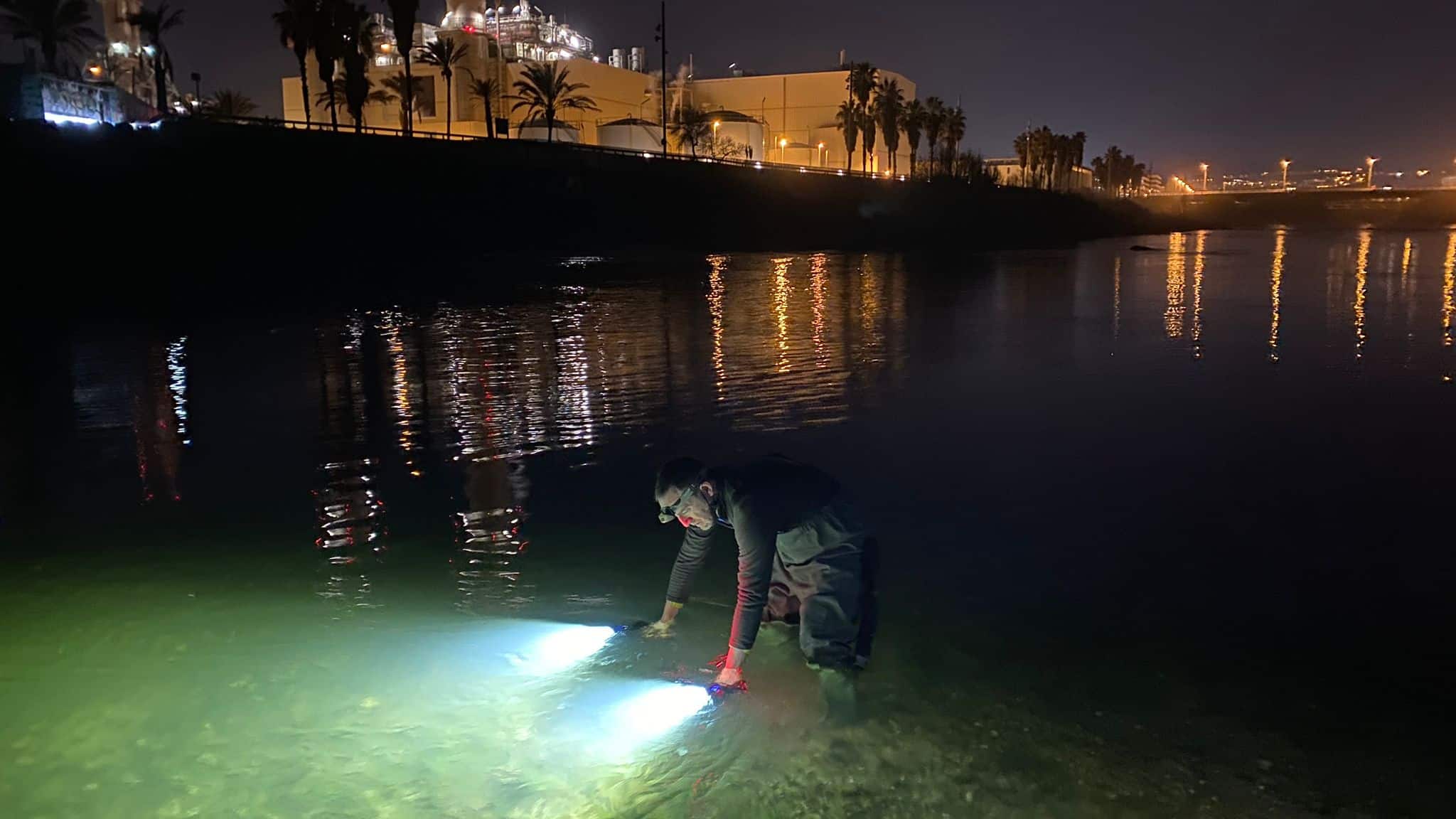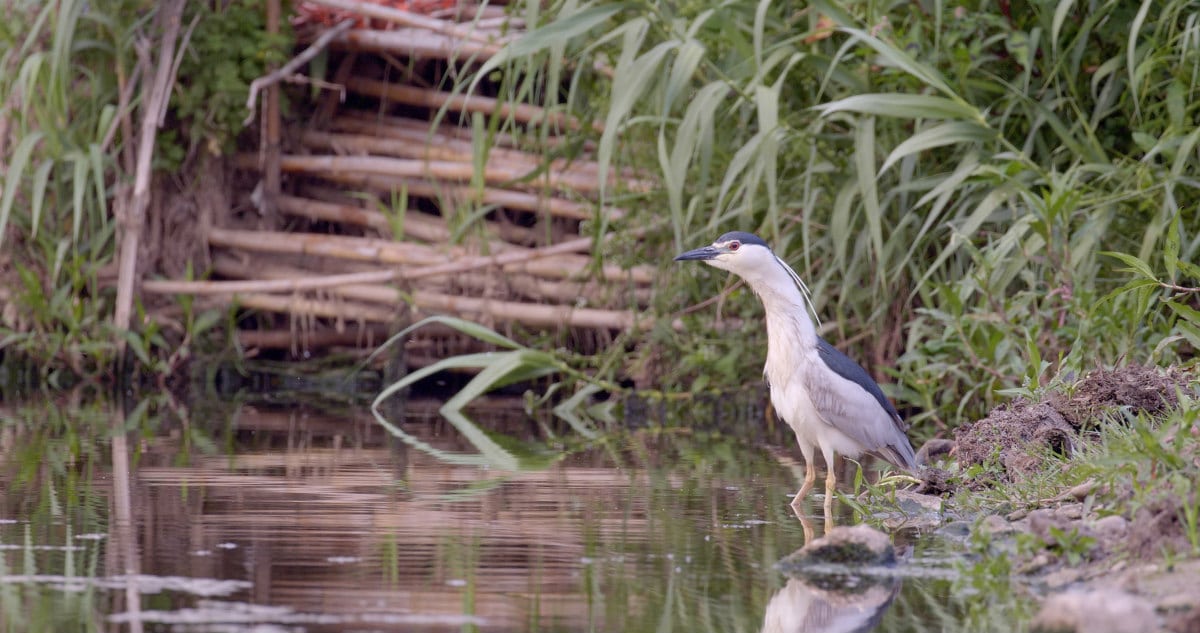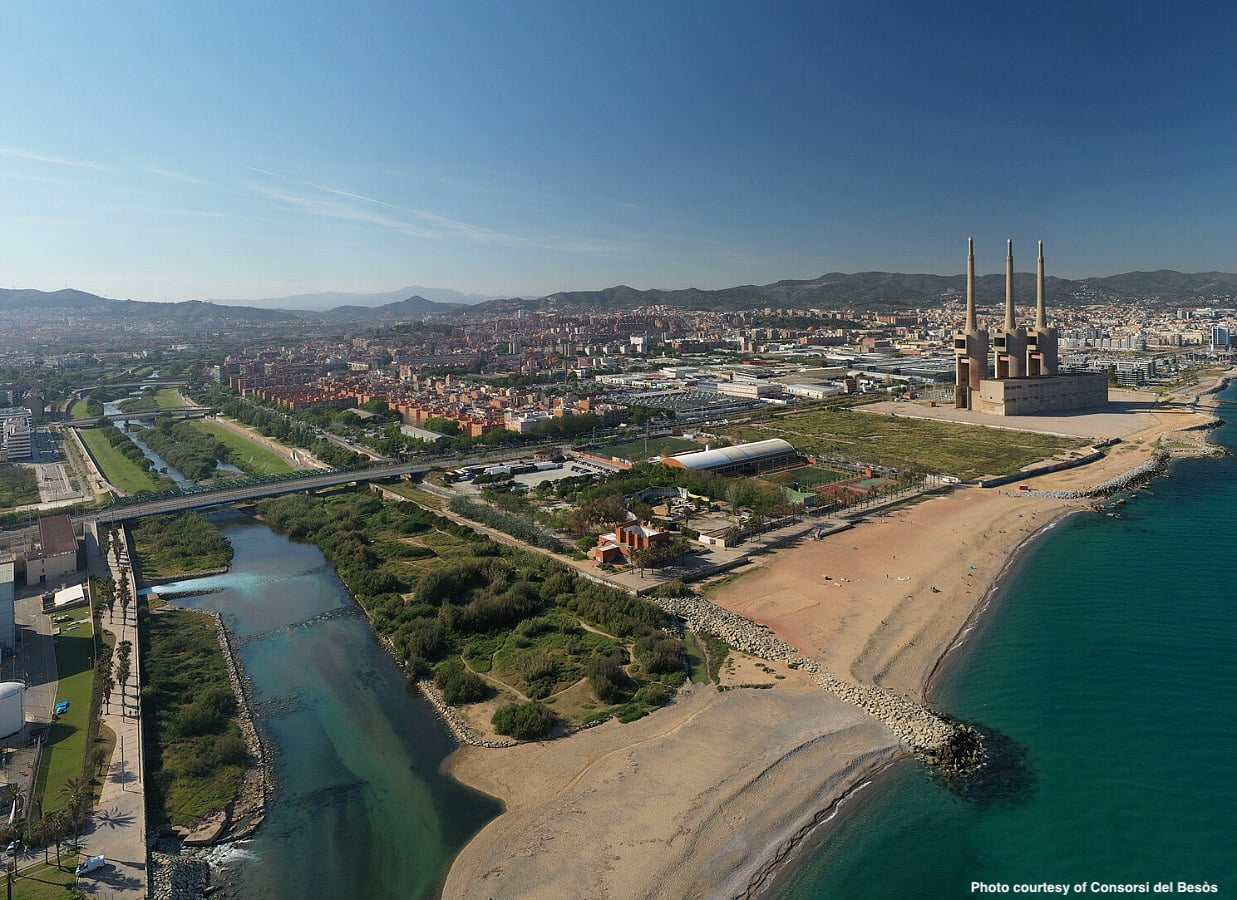Listen to the audio version of this article (generated by AI).
Urban forestry is popular. Before-and-after images of a Paris street that went from being filled with cars to brimming with greenery can garner hundreds of likes on social media. Architects, urban planners, and city practitioners are fervent advocates of tree canopy. These days, leaving out tree planting from a green city project application in Europe is almost as risky as sending the wrong song to the Eurovision contest.
So, it’s no wonder that the team granted funds for the GreenInCities project in the metropolitan area of Barcelona was initially shocked when they heard from a group of wildlife conservationists: “the palm trees have to go.”
GreenIncities will rewild a 5,000 m² esplanade, which is currently covered in concrete and has minimal vegetation and palm trees, on the banks of the Besòs River. The project promotes the coexistence of human activities with ecological needs to protect and enhance biodiversity in urban areas. This area serves as a transitional zone between urban life and the protected natural environment of the river mouth, which is important for biodiversity and is frequently used as a birdwatching and wildlife observation point.
Yet, the GreenInCities project will only renaturalize a small fraction of the river mouth. There are two behemoth projects in the same area: the green city project ReViuBesòs, which has also received funding from Europe to support the ecological recovery of the Besòs River, and the urban redevelopment plan known as “The 3 Chimneys.” This plan aims to transform a former thermal power plant—recognized by its three iconic chimneys—into an audiovisual hub and convert its 32-hectare seafront into a new neighborhood featuring a large park.
Historically, the Besòs River formed a delta created by three rivers, irrigating agricultural lands in Barcelona. Its erratic flow led to significant flooding, influencing urban development around the Sagrada Familia, which was constructed on drained marshlands.

From the 1950s, the river area underwent rapid urbanization due to industrialization and immigration from southern Spain. However, a devastating flood in 1962 resulted in about 800 deaths and prompted the construction of concrete retaining walls, which degraded the river’s ecological status. Factories began polluting the river, making it one of Europe’s most contaminated waterways. In 2000, a regeneration project was undertaken to restore the river and create the Besòs River Park.
***
In the 1990s, two high school friends began exploring the wildlife along the Besòs River. “At 13, I quit soccer to go birdwatching,” recalled Xavi Larruy, while David Perpiñán jokingly remarked, “The Besòs at that time was like the Berlin Wall. The general impression was that you didn’t go down there.” Despite this perception, they ventured into the area and have been documenting its wildlife ever since.
David Perpiñán and Xavi Larruy are akin to the Attenboroughs of the Besòs River. While Larruy has become a biologist and ornithologist, Perpiñan, a veterinarian, is a wildlife documentary producer, and his latest book, ANIMALES vs. ZOOS: Una mirada crítica a la cautividad en los zoológicos, advocates against zoos. In the 1990s, Perpiñán spotted a Flamingo for the first time. A camera installed by Larruy captured an otter. Recently, Perpiñan has released a documentary about the return of eels, which were once extinct in the Besòs River and are endangered globally.
“Go any weekday morning, and you would find one of them with their binoculars looking for animals,” says Julia Azpiroz with a smile. She is an architect working for the Pla Estratègic Metropolità de Barcelona (PEMB), one of the 31 partners in the consortium of the GreenInCities project, which includes collaboration with ten other European cities. The Institute for Advanced Architecture of Catalonia leads the project. It is not unusual for architects and urbanists in Europe to utilize their expertise and networks to secure funding for a green city project, and then engage public partners, such as municipalities, to bring them on board.
However, the GreenInCities team has done something revolutionary: they have involved citizen experts like Perpiñán, Larruy, and eight more residents, who act as a grassroots wildlife conservation group in the project, rather than merely launching citizen participatory processes that are often just good on paper for political PR.
These citizens are already deeply engaged with the area and are very familiar with the territory. In the co-analysis session, the GreenInCities team utilized a pre-established analysis and an understanding of the area, and asked the expert citizens group to validate that information, particularly regarding the identification of flora and fauna.
“After that, we worked on the co-design process of the site and realized we had overlooked two important aspects as technicians. Firstly, the citizen experts group helped us select the plants for the site and advised us to cut down all the palm trees, which was surprising for us. When you think about renaturalization, you usually consider adding trees, not removing them,” explains Azpiroz. However, trees should be regarded as more than just exotic decorations. As climate refuges, palm trees are ineffective; they occupy space, provide no shade, and are nesting sites for an invasive bird that harms native bird populations.

“Secondly, together we decided to move the walking path away from the mouth of the river to maximize ecological benefits and keep humans as far away as possible from the flora and fauna we aim to protect.”
“It is a passage area for cyclists and pedestrians heading to the bike lane along the shore, making it difficult to ensure that human activity does not interfere with the development of biodiversity,” explains Francesc Romero, architect and project manager of the Consorci del Besòs, another partner of the GreenInCities project.
The group of local wildlife experts suggested removing the asphalt, leaving a dirt road, and installing a wooden structure with robust panels and holes, allowing people to observe the wildlife without disturbing the birds. “It makes no sense to naturalize with cement. And you can’t put anything that people can destroy,” says Perpiñan, pointing out the occasional vandalism that occurs in the area.
Recommended Read: The European City Designed in a Huge Oasis, Long Neglected
On the other hand, Azpiroz explains that the population in this area of Sant Adrià is very sensitive to environmental issues, especially given the region’s history of industrial pollution. The area has an extreme urban vulnerability index – characterized by a high concentration of low-income and immigrant populations, as well as a very low-quality housing stock. “Unfortunately, urban vulnerability coincides with climate vulnerability,” she laments. Obviously, she says, the project’s goal is also to strengthen environmental awareness and transform the space into a more attractive area for citizens, while protecting and enhancing biodiversity in the river’s mouth.

“The truth is, if we hadn’t involved this local citizens’ expert group, we would have made very contradictory and counterproductive decisions. And in fact, as a consortium, we are already considering using the same methodology with the same group for the larger green city project in ‘The 3 Chimneys’ park,” reveals Francesc Romero. “They were very receptive from the beginning and were involved in the decision-making process. They inquire about the progress and ultimately defend the project as well.”
“However, our fear now is to lose their trust. While there’s the interest of the consortium, it is also crucial to keep them involved,” says Azpiroz. There are numerous environmental challenges affecting the health of wildlife around the river, including the low mineral quality of the water, which primarily originates from wastewater treatment plants and a combined energy plant that discharges warm water into the river’s mouth.
In 2000, the European Union allocated substantial funds to the city administration for the regeneration of the Besòs River. At that time, Perpiñán and Larruy submitted numerous proposals on how to best preserve the estuary. “They rejected them all,” David laments. “Because most of them were to leave it as it was. In just one of our suggestions, we proposed building a lagoon that was over-engineered. This often happens when there are too many funds involved.” And don’t listen to people deeply engaged in the area of any green city project that Europe intends to pursue.





